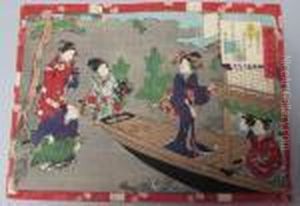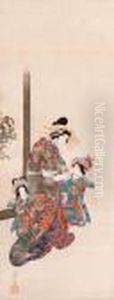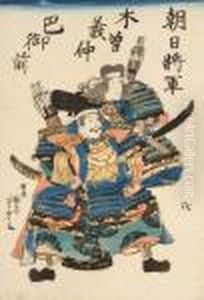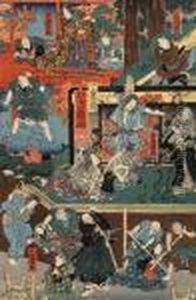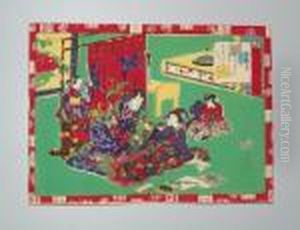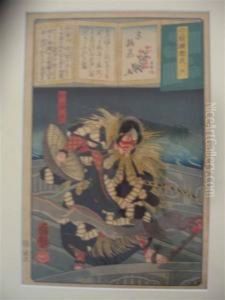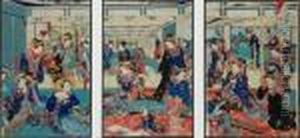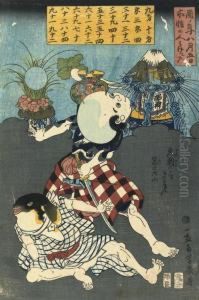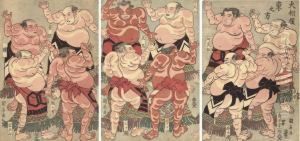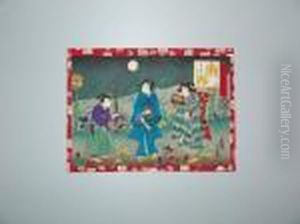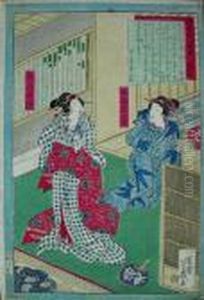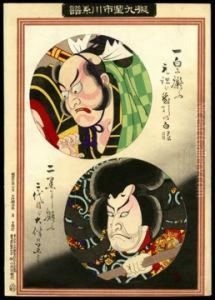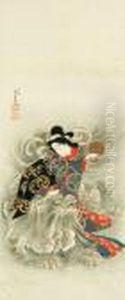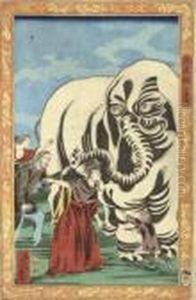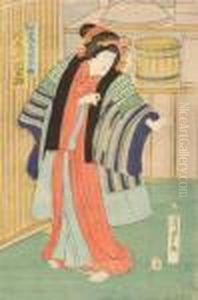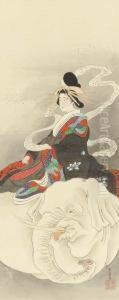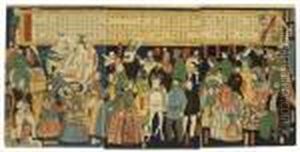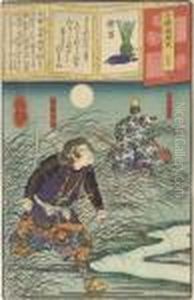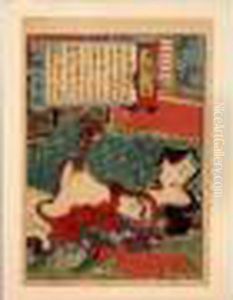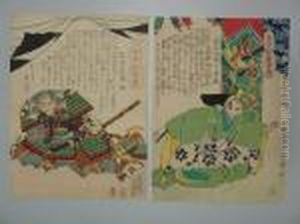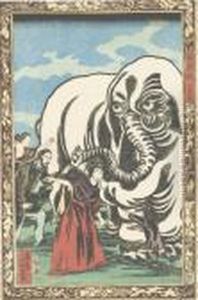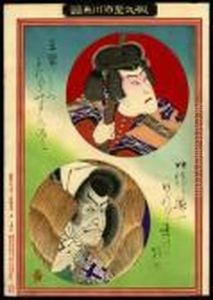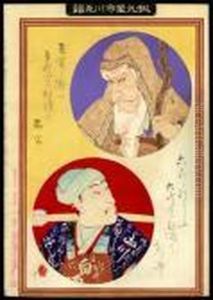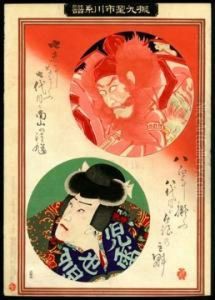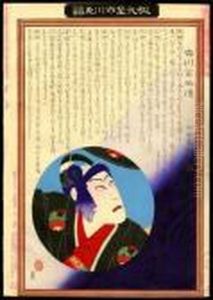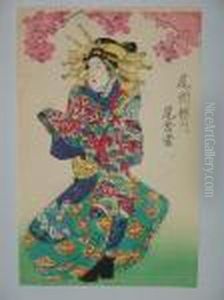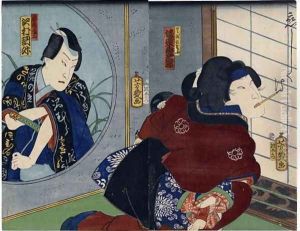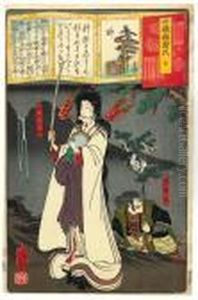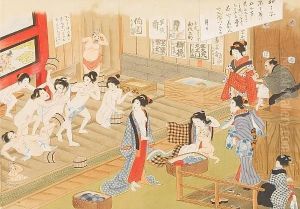Utagawa Yoshiiku Paintings
Utagawa Yoshiiku, also known as Ochiai Yoshiiku, was a Japanese artist of the Ukiyo-e genre, which translates to 'pictures of the floating world' and refers to the famous Japanese woodblock prints and paintings that were popular during the Edo period. Born in Edo (present-day Tokyo), Yoshiiku became a student of the renowned Utagawa Kuniyoshi, who was one of the last great masters of the Ukiyo-e style. Under Kuniyoshi’s guidance, Yoshiiku honed his skills in drawing and woodblock printing.
Yoshiiku started his career working on designs for Ukiyo-e prints, including single sheet prints of beautiful women (bijin-ga), actors (yakusha-e), and historical scenes. He was also known for his satirical and humorous works, which often commented on contemporary society and politics. One of his most significant contributions to the world of Japanese art was his role in the development of the 'news nishiki-e', which were colorful woodblock prints that depicted current events and news stories, somewhat akin to modern editorial cartoons.
In the 1860s, as the Ukiyo-e genre began to decline with the advent of photography and changes in Japanese society, Yoshiiku adapted by co-founding the Tokyo Nichi Nichi Shimbun (Tokyo Daily News), where he worked as an illustrator. This transition marked a shift in his career from traditional printmaking to journalistic illustration, reflecting the broader changes occurring in Japanese culture and the arts due to the influence of Western technology and ideas.
Despite the decline in popularity of traditional Ukiyo-e prints, Yoshiiku remained active as an artist until his death in 1904. His works are considered important for their historical value in capturing the transformation of Japanese society during the Meiji Restoration. Yoshiiku's legacy continues to be celebrated for his contributions to both the world of Japanese printmaking and the early development of Japanese newspaper illustration.
